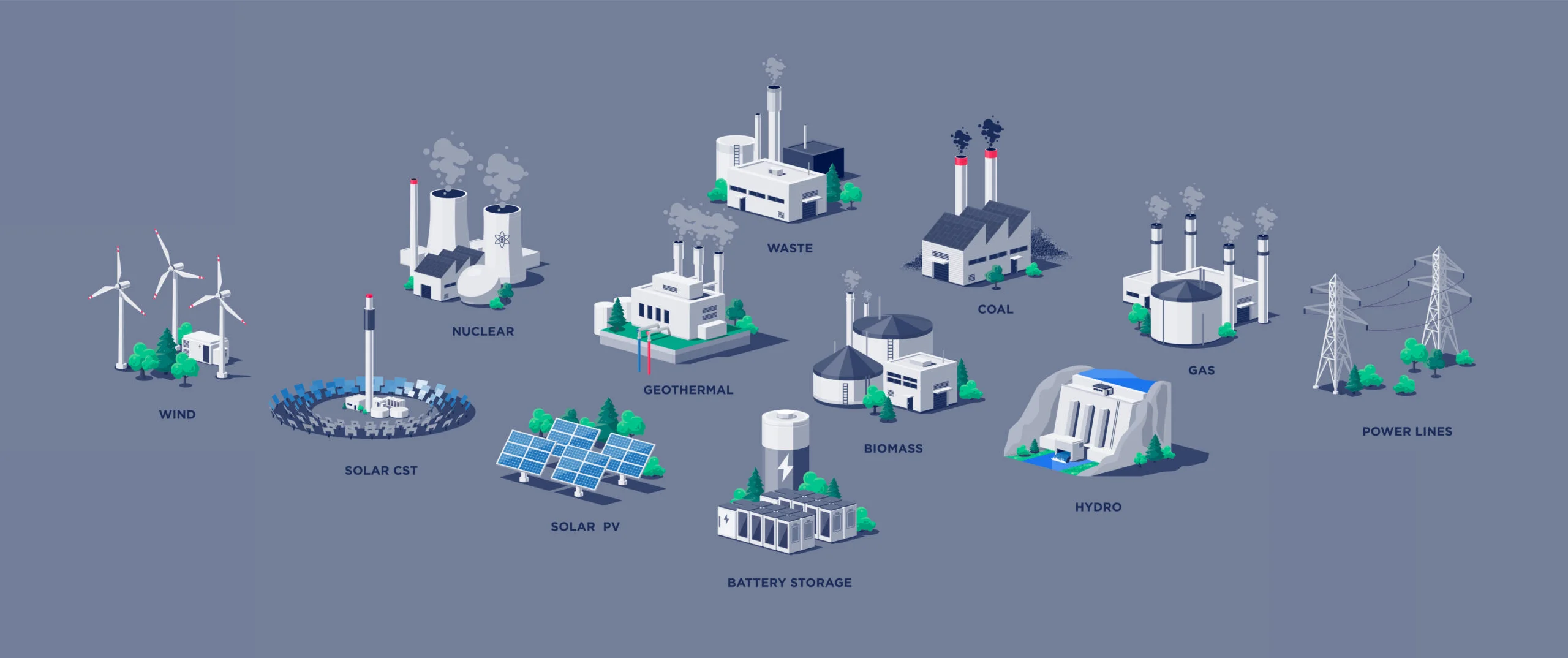According to the Short Term Energy Outlook report from the U.S Energy Information Administration research indicates that power consumption will rise to record highs in 2024/25. The report is designed to help utility operators determine their potential energy needs throughout the year, which can better inform various projects including demand flexibility initiatives and energy purchasing. The report looks at projected energy costs, environmental challenges like extreme weather, historical temperature data, infrastructure capacity, and more, all of which indicate that energy usage will continue to rise well into the future. Whether from the electrification and decarbonization efforts aimed at mitigating the effects of climate change, increased extreme weather and temperature events, or diminished infrastructure capacity, utilities will need smart demand flexibility solutions to meet needs.
The High Cost of Infrastructure
Occam’s Razor suggests that introducing more energy into the grid is the simplest solution to energy insecurity. To do that, utilities need access to new energy sources, which in turn require infrastructure to realize. That may include the wires, poles, substations, etc. required to realize any particular new energy project. Looking at this at the local level, utilities spend roughly $297.2 to $1.14m on distribution line upgrades, a figure that increases if those lines are buried.
In 2022, grid congestion had jumped 56%, adding more than $20.8b in costs. In this context, grid congestion reflects the intersection of rising energy demand and decarbonization and electrification efforts. In total, research indicates that it would take more than $2.5t to upgrade the U.S. electric grid. Put together and you see a grim picture: rising demand during the energy transition comes with an incredibly high price tag, one higher yet as applied to upgrading the entire system. Add in long renewable energy interconnection queues, and utilities are at a crossroads: how can you meet customer demand without losing the bank?
DERMS to the Rescue
To realize demand flexibility programs, utilities need to make a choice: are they controlling internal or external resources? What type of devices do they need to control and to meet what end? Any demand flexibility program is only as effective as the distributed energy resources (DERs) that enable the program, which means that, in turn, utilities must choose what type of distributed energy resource management system (DERMS) might best satisfy their needs.
Not all distributed energy resource management systems (DERMS) are created the same and can appear in several ways. For utilities, that means looking first at your needs: is the objective to manage utility-owned energy assets or to aggregate the behind-the-meter DER assets within the community? If the answer is the former, utilities turn to a Grid DERMS, which controls utility-owned assets like solar fields (etc.) to meet demand. Because keeping the grid in balance around the clock is imperative, grid operators turn to these Grid DERMS to ensure their desired outcome. It’s worth noting that these utility-scale energy assets often come with hefty price tags and represent a significant upfront investment from utilities and the constituency they serve.
By contrast, a Grid-Edge DERMS offers utilities an opportunity to manage the various DER assets that are increasingly adopted by an eager public. Understandably, while many utilities offer green energy programs like demand response or EV managed charging to customers, they rarely rely on these energy assets to meet overall demand, instead using load shifting to mitigate high costs. Fortunately, Topline Demand Control, a novel realization of smart forecasting software, artificial intelligence, and model predictive control, provides reliable energy outcomes every time. With Topline Demand Control, utility Grid-Edge DERMS behind-the-meter demand flexibility programs can offer dependable aggregate energy savings every time, removing uncertainty in relying on, for example, customer DER assets, while providing alternatives to costly infrastructure upgrades or peak energy purchases.
What is Demand Flexibility?
Load management strategies represent one solution, bridging the gap between costly infrastructure upgrades or new capital projects, while still meeting decarbonization objectives. In fact, using demand flexibility initiatives can generate fresh revenue streams while simultaneously achieving the aforementioned goals: these programs are a win-win for utilities, regulators, and customer programs. As a whole, demand flexibility is a series of conservation and renewable energy strategies including demand response, EV managed charging, and virtual power plants, which manage behind-the-meter distributed energy resource (DER) assets like solar, battery, electric vehicles and EVSE, and smart home devices like thermostats and water heaters. Through the use of a grid-edge DERMS, utilities can aggregate these otherwise disparate resources to enact widespread conservation objectives.
How Demand Response Helps
Demand response has a decades-long track record of success. For example, according to the IEA, demand response programs in the U.S. in 2021 totaled energy savings of 1154 GWh. Since it began, demand response has served as a solution to concerted conservation efforts. Initially using one, then later two-way radios physically implanted on homeowner devices, utilities could signal for devices to decrease usage during peak times of consumption, freeing up energy as needed to meet the demand of the greater community. Now using WiFi-enabled smart technologies, utilities can decrease usage in aggregate to accumulate and shift saved energy as needed. Still, the inconsistent weather patterns brought on by climate change have proven that perhaps more than any demand flexibility program, demand response is for all seasons, offering load management opportunities any time they are needed.
How EV Managed Charging Helps
Every year, electric vehicles are a little cheaper, with research indicating that younger generations are increasingly keen on the idea of an electrified fleet. Coupled with the Inflation Reduction Act which incentivizes EV production and adoption, an expanded EV fleet is inevitable. Fortunately, in some cases the very same Grid-Edge DERMS used to power all of your demand flexibility initiatives can just as easily manage your EV charging needs. Are EV charging needs spiking usage at erratic times? EV charging can better help manage an evolving load curve through the use of both EVSE and EV telematics, the latter a useful analytical tool for load planning needs.
The Time is Now For Virtual Power Plants
Altogether, virtual power plants refer to a confluence of demand flexibility opportunities, including BYOD programs, aggregating communally generated solar or battery assets, or through the use of formal programs like demand response or EV managed charging, both a subset of VPPs. In the Pathways to Liftoff report on virtual power plants last year, the DOE stated that to continue to meet demand, utilities would need to, at minimum, double existing VPP (or generate between 80-160 GWh) output by 2030.
Currently, the majority of the existing aggregate virtual power plant demand comes from demand response programs, although with emerging technologies like Topline Demand Control, utilities can now reliably depend on behind-the-meter assets in their communities for an assured energy outcome. As it stands, virtual power plants have the potential to improve communities in multiple ways including enhancing climate resiliency by utilizing locally available energy assets, while decreasing high peak energy spending.
Rising Peak Energy & Demand Flexibility Conclusion
Flexible demand is a crucial component of the energy transition and will help utilities meet needs while defraying the high costs associated with peak energy purchases, expensive infrastructure upgrades, and more. Simultaneously, employing demand flexibility programs complements decarbonization efforts, while in turn satisfying customer interests.





